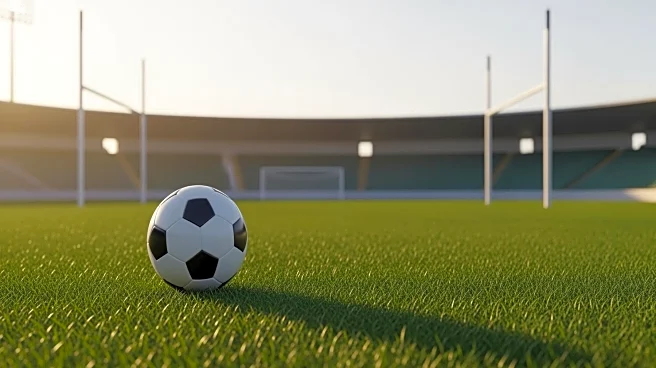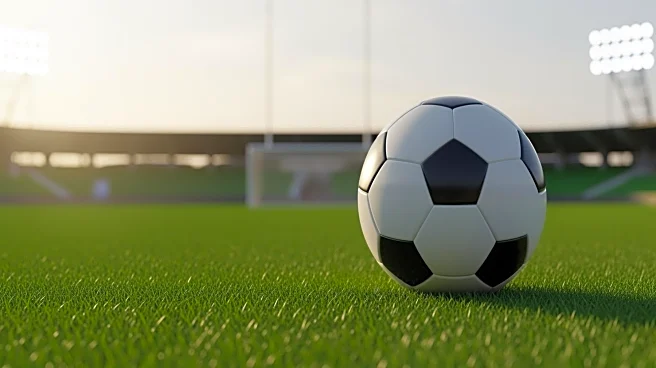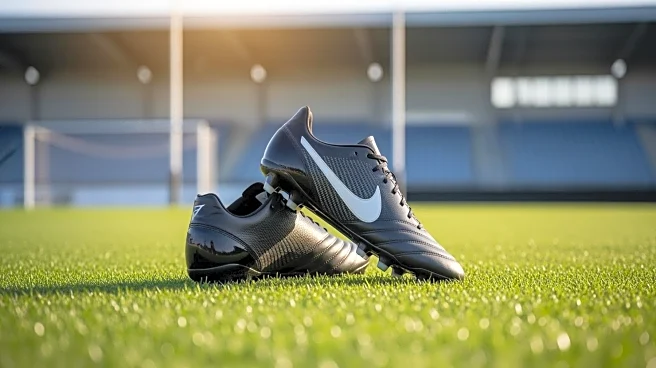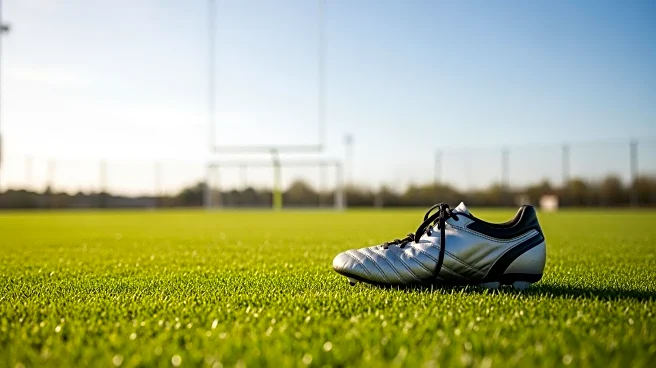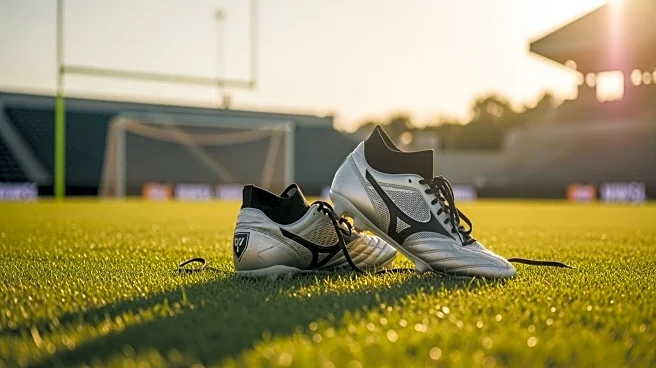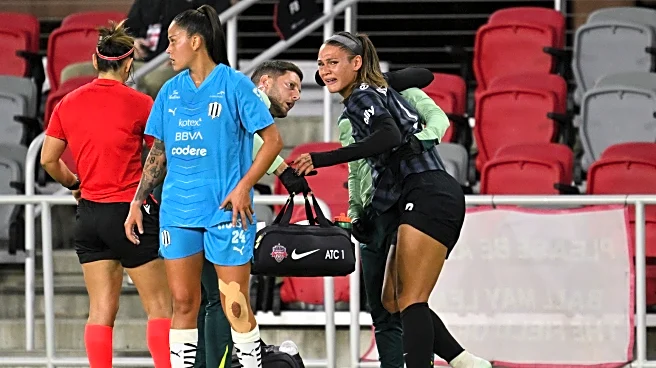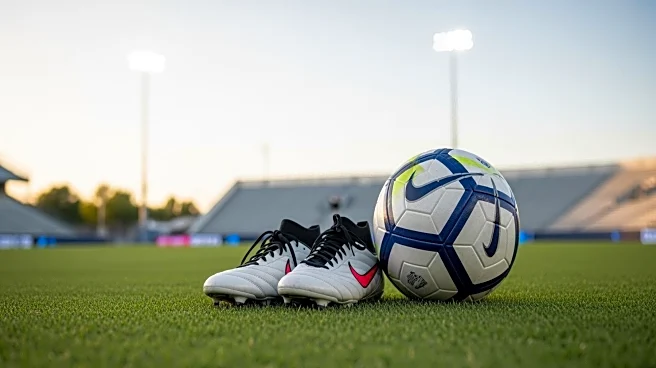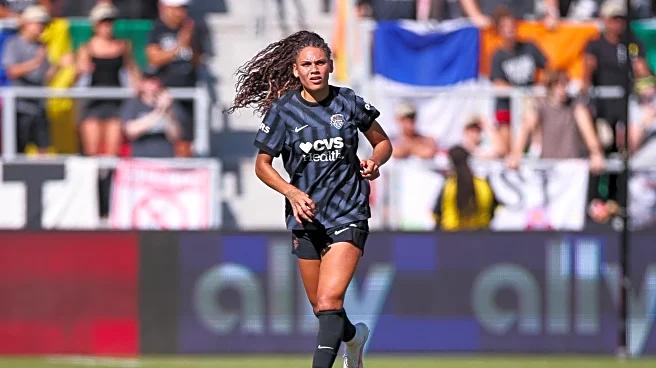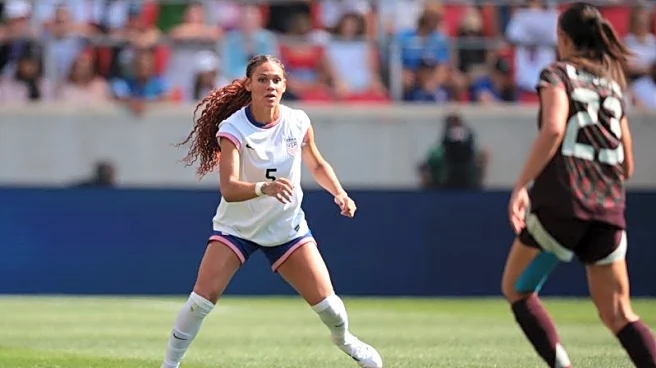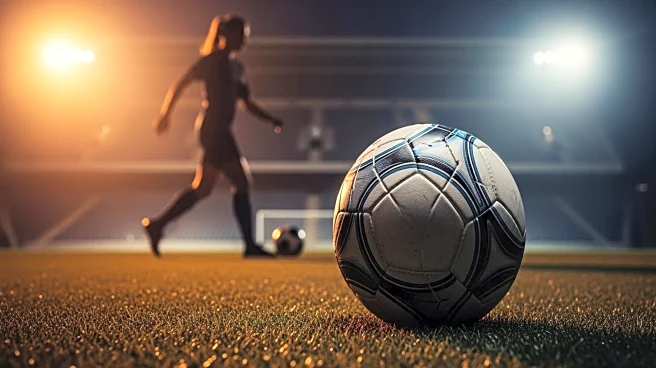What's Happening?
Trinity Rodman, a forward for the Washington Spirit and a key player for the U.S. women's national team (USWNT), has sustained a Grade 1 MCL sprain. The injury occurred during a match against Monterrey
in the Concacaf W Champions Cup, where Rodman was seen leaving the field in tears and later on crutches. Washington Spirit head coach Adrian Gonzalez confirmed the injury and stated that there is no specific timeline for her return. This development comes just as Rodman was set to rejoin the USWNT after a six-month absence. Her participation in the upcoming NWSL playoffs and international matches against Portugal and New Zealand is now uncertain.
Why It's Important?
Trinity Rodman is considered one of the top players in the NWSL and a crucial part of the Washington Spirit's offensive strategy. Her injury could significantly impact the team's performance in the upcoming NWSL playoffs, where they have secured the No. 2 seed. Additionally, Rodman's absence from the USWNT could affect the team's dynamics and performance in their upcoming international fixtures. The injury also highlights the physical demands and risks associated with professional sports, particularly for athletes who have been managing recurring injuries, as Rodman has with her back issues.
What's Next?
The Washington Spirit will need to adapt their strategy for the remaining NWSL regular season games and the playoffs without Rodman. The team will likely focus on rehabilitation and monitoring her progress closely. For the USWNT, adjustments may be necessary to fill the gap left by Rodman's absence in their upcoming matches. The situation underscores the importance of player health management and could prompt discussions on injury prevention and recovery protocols in professional sports.
Beyond the Headlines
Rodman's injury raises broader questions about the pressures faced by young athletes in professional sports. As one of the most promising talents in women's soccer, her situation may lead to increased scrutiny on how teams manage player workloads and long-term health. The incident also highlights the emotional and psychological challenges athletes face when dealing with injuries, which can affect their performance and career trajectory.
